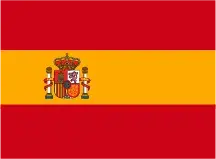After two and a half years of waiting, Bazarra Service Station has inaugurated a rapid charger at its location in A Costa da Morte, A Coruña.

This is confirmed by Julio Bazarra, Manager of Bazarra Service Station and Vice President of the Galician Federation of Service Stations (FEGAES), to Mobility Portal España.
This equipment, which includes Type 2, Combo 2, and CHAdeMO connectors, is one of the few of its kind in the region.
The device, provided by Repsol, accepts various payment methods, including Waylet, ensuring a particularly competitive offering.
“We would like to become a benchmark in electric vehicle charging, attracting new customers and maintaining the loyalty of existing ones,” says Bazarra.
What is their strategy to achieve this goal?
Provide a range of amenities for drivers while they wait, such as coffee or water, free Wi-Fi access and locations to charge mobile devices, tablets or computers.
As well as carrying out various marketing campaigns on social networks to inform their clients about these services.
The station has recently added a new traffic sign indicating the types of energy they supply, including electric recharging.
This makes it one of the first gas stations to install the new S-105 traffic sign from the General Directorate of Traffic (DGT).
“Although we have only been in the electric mobility sector for a short time, we are already carrying out important operations,” he explains.

What about the other chargers that still don’t work?
In December 2022, Mobility Portal España reported that 85 stations in Galicia were required to install chargers in accordance with Order TED/1009/2022.
The regulations stipulate that all facilities must be operational by August 2023.
However, by this date, many of these were still not functioning.

Furthermore, two months earlier, in June, Bazarra confirmed:
“There are investments in chargers of 45 thousand euros or more that have been paralyzed by the procedures for more than a year.”
This means that around 80 per cent of the requested facilities were still not operational.
This situation not only affects station owners, but also electric vehicle users who face difficulties in finding charging points.
How many are still left to be enabled today?
“There are a lot of them, and it is a general complaint in the sector,” emphasizes the Vice President of FEGAES.
Especially taking into account Law 7/2021, which establishes that service stations with gasoline and diesel sales exceeding 10 million liters in 2019 must install at least one 150 kW charger.
Those with sales greater than 5 million liters must have at least one 50 kW station.
This regulation has led to more than 800 gas stations working to comply with these guidelines.
This proposal involves significant investments, which in many cases have not yet been amortized, mainly due to their low utilization.
As well as the bureaucracy that slows down the procedures for enabling the points, turning into an investment that must wait months, and even years in this case, to start working and generate the first returns.
A clear example is CEPSA, which has received warnings from the administration for not having installed a station for electric cars for which they have not been granted approval.
The company has approximately more than 400 projects, for which it has requested more than 300 permits from public entities.
By the end of last year, there were only 100 stations granted and 80 built, of which around 10 were in operation.
According to industry experts, the key will be to share locations between electric charging stations and gas stations.
This is essential to ensure that the stations remain operational and that their infrastructure, which already includes rest areas, can also serve users who need to recharge their vehicles.
This will not only maximize the profitability of the projects , but will also optimize the use of available space.
It will also allow them to take advantage of their strategic locations at the main or exclusive highway exits.








